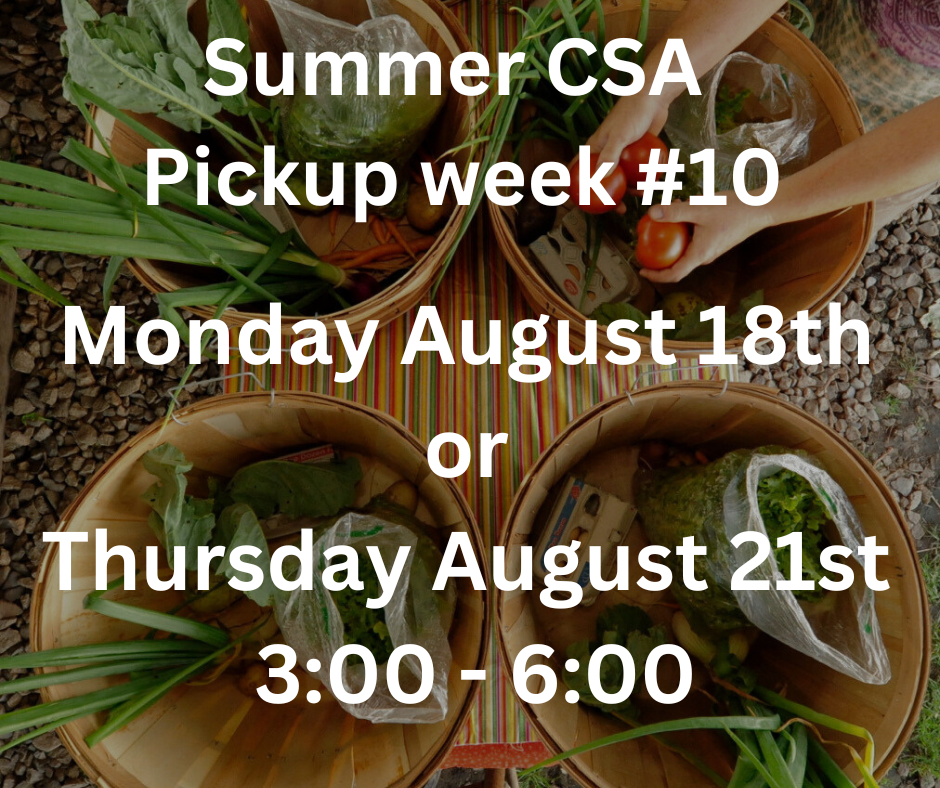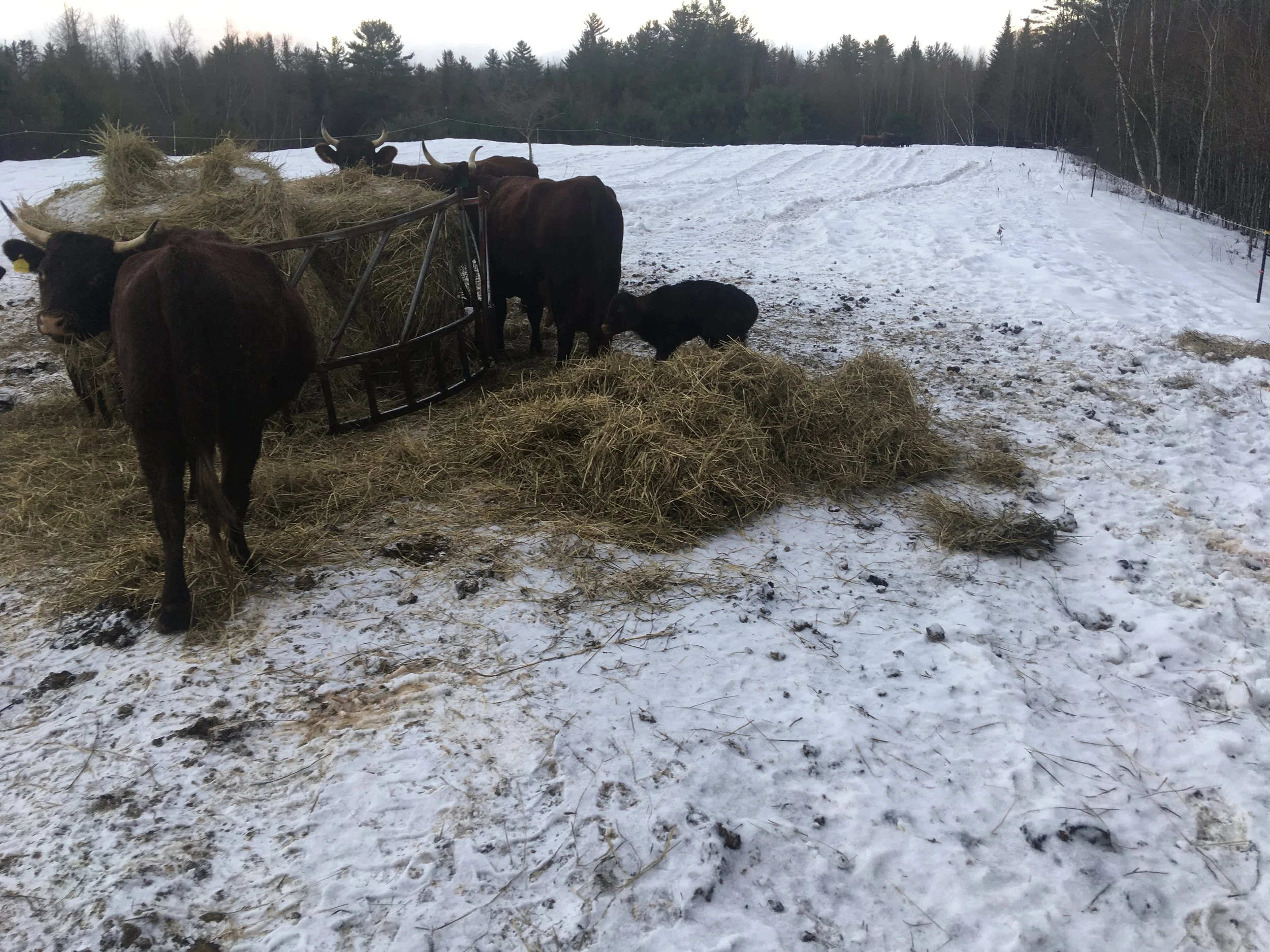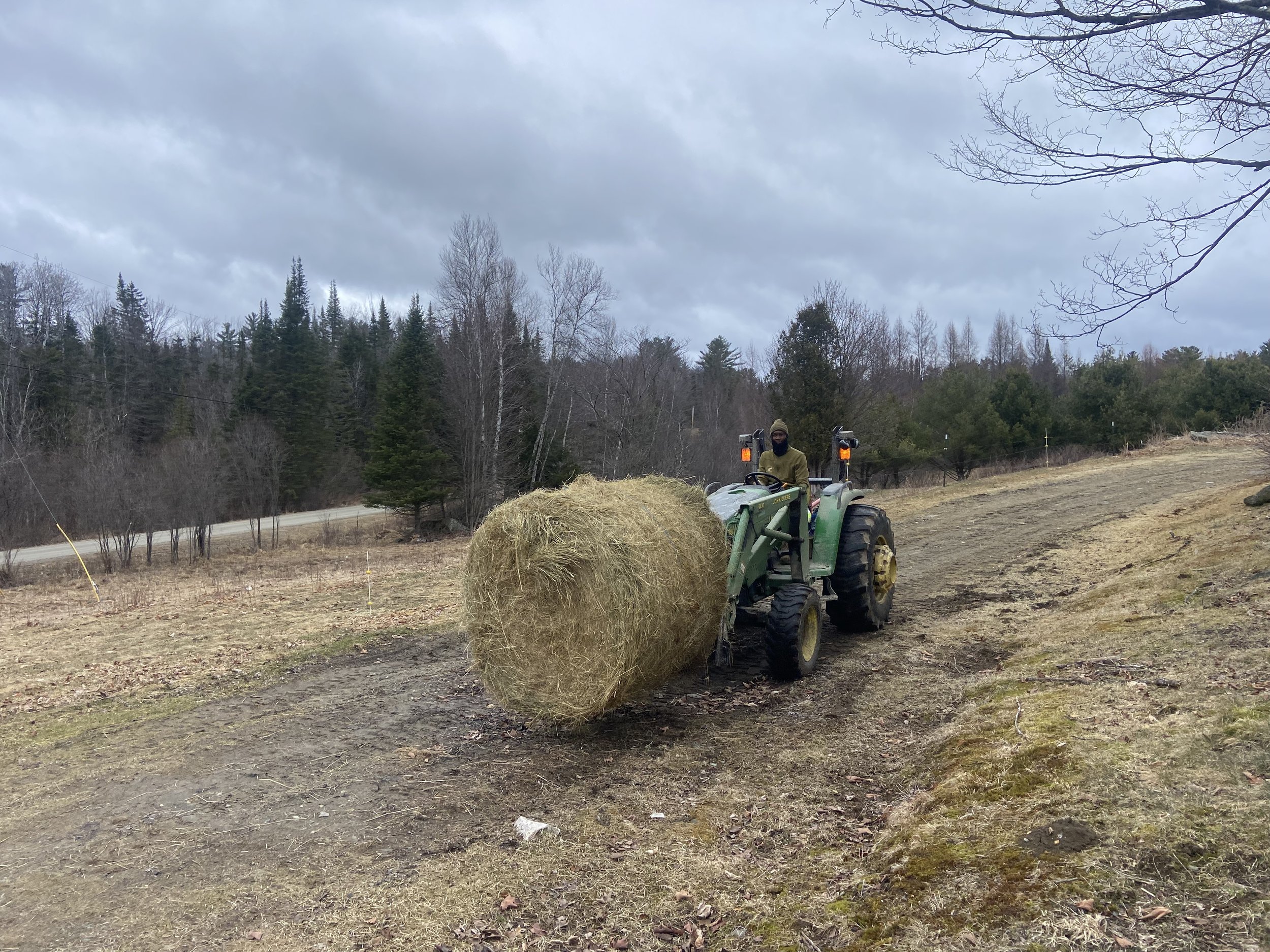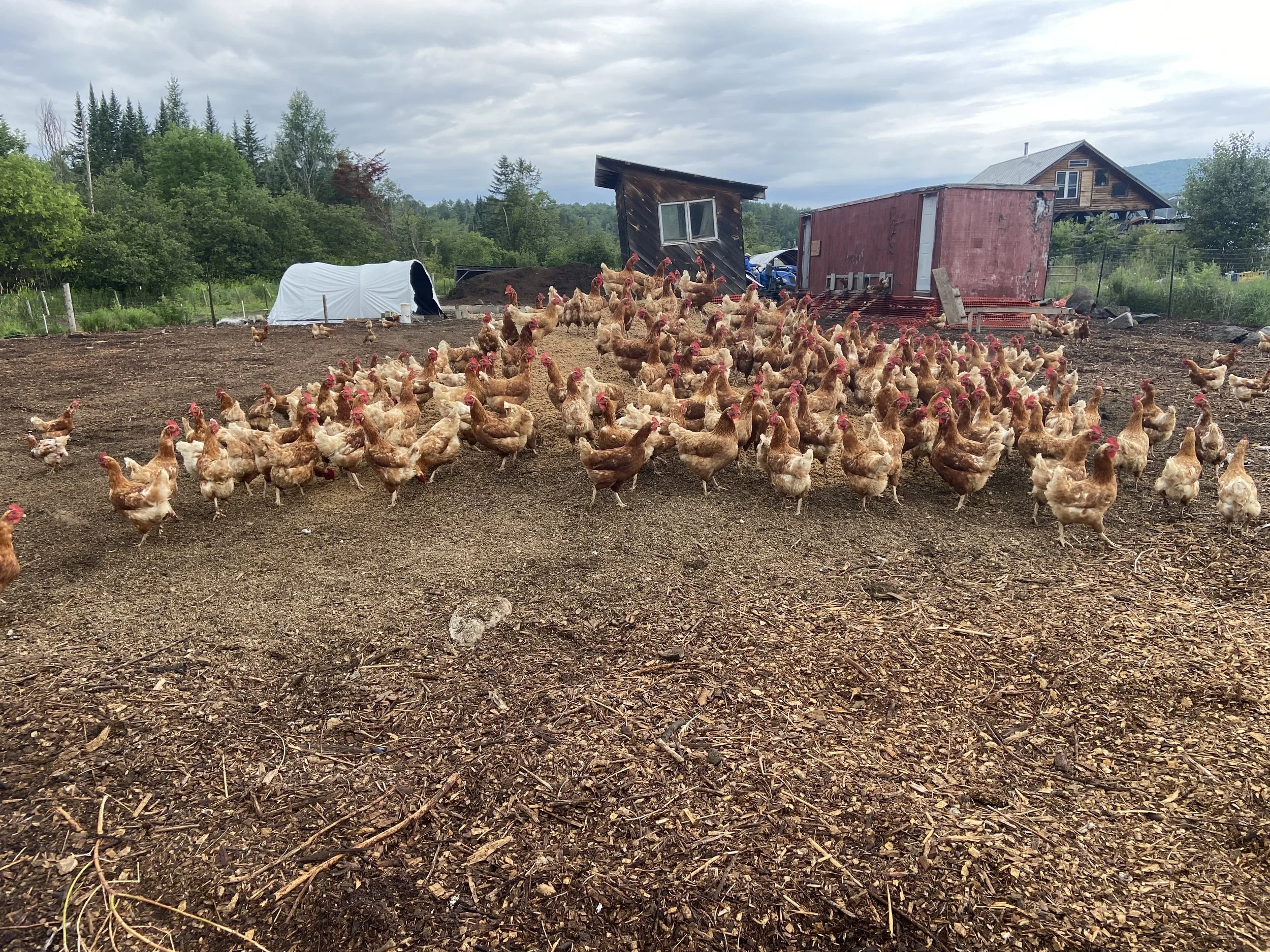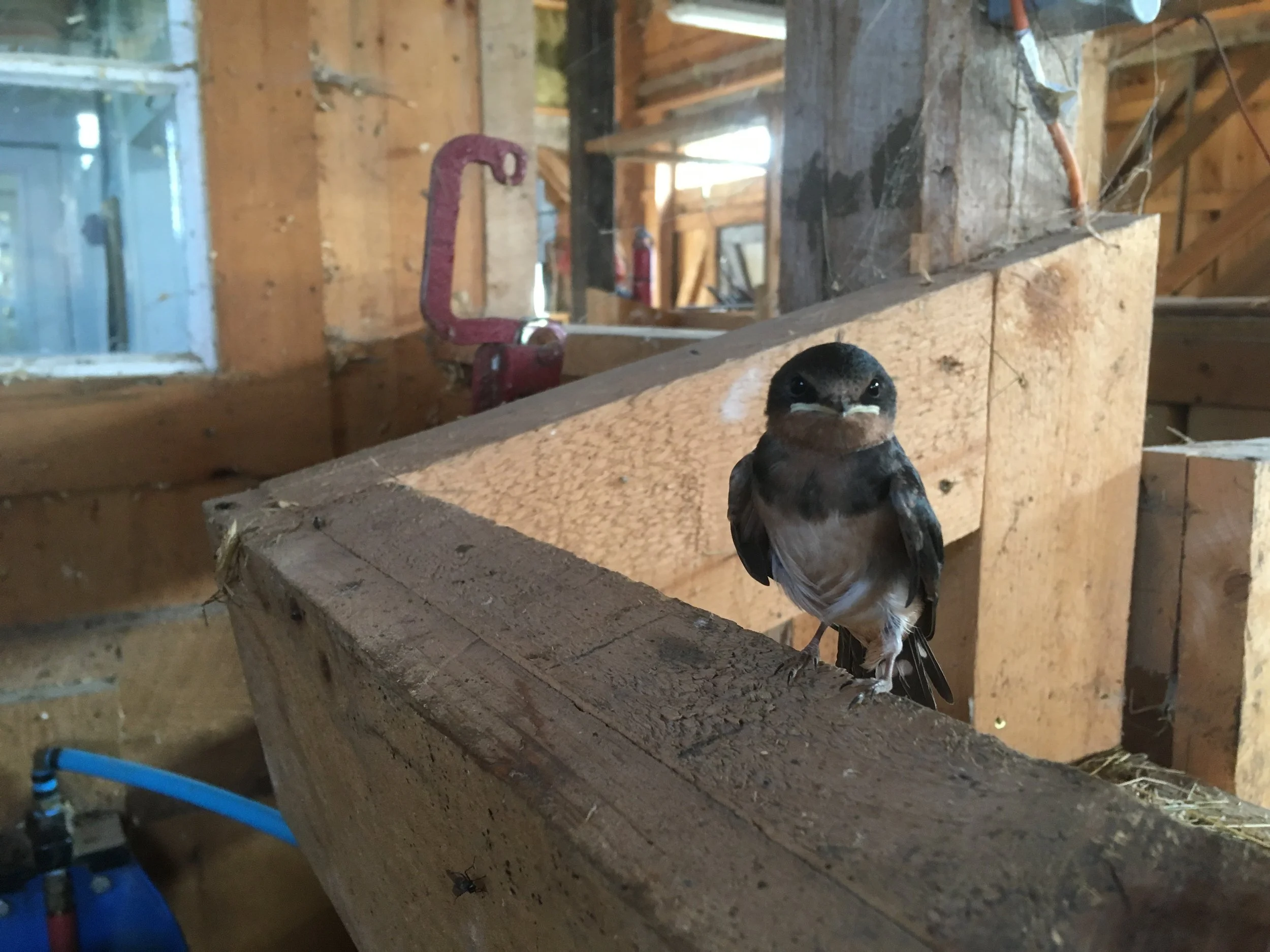Hay Season
Amidst the craziness of the harvest season ( remember NH times eat local month with the harvest season) we have begun to store hay for the winter months when pastures are blanketed with snow.
Cole unloaded a trailer of round bales from Cross Farm in Barnet VT. You may recognize the Cross Farm name from the organic chicken we sell in the farm stand. Owner Zach Mangione was an employee here before heading off to start his own farm.
The bulk of our round bales this season are coming from Zach. We also have been filling the barn with square bales from a farm over in Easton NH.
Our cows, goats, and Donkeys enjoy the hay all winter long until the pastures wake up again come end of April/May.
When it comes to hay, the timing of the harvest makes all the difference. Farmers often talk about first cut and second cut hay, and each has its own qualities and uses. First cut hay is typically harvested in late spring or early summer. By this point the grasses are more mature, with thicker stems and seed heads, which makes the hay coarser and higher in fiber but lower in protein and energy. It’s an excellent choice for animals that don’t require rich feed, such as beef cows, dry cows, or horses that benefit from plenty of roughage.
Second cut hay, on the other hand, is harvested later in the summer after the fields have had a chance to regrow. This hay is leafier, softer, and finer in texture, with higher protein and energy content but less fiber. Because of its nutrition it’s often preferred for dairy cows, young animals, or horses needing a boost in their diet. In short, first cut provides bulk and fiber, while second cut offers more nutrition and quality — both are important for keeping livestock healthy and well-fed throughout the year.
Much of the hay we have been bringing onto the farm has actually been second cut hay.
Chickens
We are crossing our fingers while preparing for the arrival of 700 pullets. As you may recall from a previous newsletter we are short eggs this season as we at the last second were unable to acquire chickens in May. Issues surrounding the bird flu limited the supply of hens in the spring. About 500 chickens are currently on the farm providing about 29 dozen eggs a day. With the arrival of these pullets, we anticipate 50 -60 dozen eggs right as cold weather sets in.
Below: Tim with Jav’s help, rolled one of our moveable chicken coops into place to provide more roosts and nesting boxes for the new chickens.
Another feathered friend who frequents the farm. Barn swallows are a sure sign of summer. They’re expert aerial acrobats, darting and swooping as they catch insects mid-flight. We look for their arrival in May and enjoy their presence all summer long. They help keep flies and mosquitoes under control. True to their name, they often build mud-cup nests in our barns and rafters they can find, raising their young close by. Beautiful, beneficial, and always in motion, they can have anywhere from 4 - 14 babies in a summer.
Pickup
Come anytime between 3 pm and 6 pm to choose your share on the day you chose when you signed up, so either Monday or Thursday.
Please bring your own bags or box to gather your choices.
If you signed up for an add-on, don’t forget to pickup your Coffee, Flowers, Eggs, and Pork sausage.
Remember to contact us in advance if you will be unable to pick up on Thursday, so that we can store your share in our walk-in refrigerator to keep it fresh. You can email or call us to let us know. Thank you to all of those who have already arranged another time to pickup!
Here's what you will find in this weeks share:
Full shares receive 12 choices and
Small shares receive 8 choices.
Please use the tally sheets to keep track of the number of choices you are taking at pickup. We want to make sure you receive all 8 choices if you are a small share and 12 choices if you are a large share!
Please note the corn from Lyman View Farm is not organic
Want some recipe ideas?
CHECK OUT THE CSA RECIPE PAGE!
Your Farmer, Sam (For Tim, Mikaela, Jeannie, Jim, Evrald, Shawn, Jav, Jeb, Colin, Jaime, Wyatt, Ani, Sophie, Cole, and Jess)


